“Historically we’ve always been, let’s just focus on the good stuff. […] That’s not the full story here. Authenticity is important. […] To be able to really embrace who you are as a region, as a destination in an authentic way, tell that story. It resonates more with the people here, and it builds pride.” – Christine Livingston
What if embracing your destination’s perceived flaws could become its greatest strength? Indiana Dunes Tourism is moving in that direction through a nuanced and layered storytelling theme called Sand and Steel.
President and CEO Christine Livingston reveals how this unique destination is celebrating the coexistence of pristine natural dunes and working steel mills that are part of its industrial heritage. Located just an hour from Chicago, Indiana Dunes offers visitors 15 miles of Lake Michigan shoreline, nearly 2,000 plant and animal species, and a powerful story of grassroots conservation alongside industrial development.
The conversation explores how Indiana Dunes now showcases the full complexity of its Sand and Steel identity through branded merchandise, scenic byway development, and interpretive experiences that celebrate this unique juxtaposition.
Livingston discusses innovative sustainability initiatives, including drop-in volunteer programs that connect visitors with local conservation efforts, an Indigenous cultural trail developed in partnership with the Potawatomi and Miami tribes, and collaborative approaches to managing overtourism during peak seasons. The destination demonstrates how sustainable tourism can enhance the quality of life for residents while creating meaningful experiences for visitors.
On Travel Beyond, you’ll also learn:
- How Indiana Dunes transformed from hiding steel mills to celebrating their Sand and Steel identity as a unique competitive advantage.
- Why the Three Dune Challenge has become Indiana Dunes’ signature experience, attracting visitors while protecting fragile ecosystems through strategic trail management.
- How Indiana Dunes’ drop-in volunteer program connects visitors with meaningful conservation work while creating authentic travel experiences.
- What makes Indiana Dunes the “birthplace of ecology” and home to more species than most national parks despite its compact size.
Subscribe to Travel Beyond through Apple Podcasts, Spotify, or your favourite podcast player.
Show notes
Indiana Dunes Tourism – The official destination marketing organization for Porter County, Indiana, leading the innovative “Sand and Steel” authentic storytelling campaign that celebrates both natural beauty and industrial heritage.
Potawatomi and Miami Indigenous Cultural Trail – A collaborative project between Indiana Dunes Tourism and tribal nations creating authentic Indigenous storytelling experiences through art installations and interpretive trails.
South Shore Line Electric Train – The interurban electric train connecting Chicago to Indiana Dunes, recently upgraded with the new “Bikes on Trains” programme for sustainable transportation options.
Three Dune Challenge – Indiana Dunes’ signature hiking experience climbing the three tallest dunes in the state park, designed to protect fragile ecosystems while providing memorable visitor experiences.
Images provided by Indiana Dunes Tourism.
Episode transcript
Christine Livingston: Historically, we’ve always been, let’s just focus on the good stuff. That’s not the full story here. Authenticity is important to be able to really embrace who you are as a region, as a destination in an authentic way. Tell that story. It resonates more with the people here and it builds pride.
Peter McCully: Welcome to Travel Beyond. I’m Peter McCully for Destination Think. On this episode, we look at travel’s role in making a better world, and we highlight leading destinations and change makers. Our guests are taking local action that the world can learn from, and they’re helping to regenerate ecosystems, communities, and economies.
They’re making positive change happen from the bottom up. Many of the voices we’ve highlighted are part of the Destination Think Collective, a peer group of more than 20 ambitious, forward-thinking destinations working toward a better future for travel and the planet. On today’s show, we’re exploring how authentic storytelling can transform a destination’s identity and build community pride.
Proving that embracing your complete story, including perceived flaws, creates more meaningful connections than sanitized marketing ever could. Just an hour from Chicago, Indiana Dunes offers visitors 15 miles of Lake Michigan shoreline, nearly 2,000 plant and animal species, and a powerful story of grassroots conservation alongside industrial development.
The destination’s new Sand and Steel theme celebrates the authentic coexistence of pristine natural dunes and working steel mills. It’s a project that reveals the area’s industrial heritage to show a fuller picture of local identity. Indiana Dunes also demonstrates innovative approaches to sustainable tourism through drop-in volunteer programs that connect visitors with conservation efforts, as well as collaborative partnerships between state and national parks.
We spoke with Christine Livingston from Indiana Dunes Tourism about how authentic storytelling resonates more powerfully than picture-perfect marketing, and why embracing your destination’s complete story builds stronger communities and more meaningful visitor connections.
Christine Livingston: My name is Christine Livingston. I’m the President and CEO of Indiana Dunes Tourism, which is a county commission, Porter County Commission. I lead our destination’s marketing, planning, and development efforts across Porter County in Indiana. We’re funded by an innkeeper’s tax and we operate as the official tourism organization of the Indiana Dunes area.
My role is to build partnerships, amplify our brands, support local businesses, and sustainably grow visitation. I’m a convener. I bring together local businesses, organizations, government, conservation partners to support our thriving visitor economy.
Peter McCully: Christine, for someone who’s never been to Indiana Dunes, what would you say are the absolute must-do experiences that capture what makes the place special?
Christine Livingston: I would have to say that our Three Dune Challenge is our signature trail that climbs the tallest dunes in the state park. It’s a 1.5-mile hike. It’s not long, which is good because it makes it possible for so many different people—young children, older people. I think we had a hundred-year-old woman do it recently, but it’s over the three tallest dunes, so there’s bragging rights.
It’s a really popular trail on social media because it’s over 550 vertical feet of vertical climb. It’s physically challenging, but it’s doable for most visitors. It’s very accessible. The parking lot to get there is easy. We basically curated this experience for visitors when they come.
It’s popular for marriage proposals. I’ve heard of many dogs that have had their final walk on the Three Dune Challenge, birthday celebrations. It’s an accomplishment. I think the thing that I especially love about our Three Dune Challenge is it really embodies our partnership with our local parks. This was just a trail that was already there, and now it’s a trail that everyone goes to.
What that does is it keeps people on the trail, so it keeps people off the dunes, which are extremely fragile. It’s just a great partnership with our parks that maybe wouldn’t have put all the signage in and all the marketing around it, wouldn’t have really elevated it to the level that it is now, where it’s one of the number one things people like to do when they come here.
I’d say that’s definitely one thing. We had such a great result with this partnership with the state park that we did another trail, the Dune Dunes Dare, in our national park. Our destination has a national park surrounding a state park. The Indiana Dunes is actually two parks. This enables us to really showcase trails in both parks in a similar fashion.
We did the branding and the signage and partnered with both parks just to elevate the level of a numbered trail that would’ve otherwise been fairly unremarkable.
Peter McCully: Christine, if you could bring anyone in the world to visit Indiana Dunes, who would it be?
Christine Livingston: I would love to bring someone like David Attenborough who could capture the ecological depth of this place with his storytelling. I just really admire his voice and the way he brings a story to life, and I think it would be wonderful to have him come and do the Indiana Dunes. I’d also like to invite anyone who thinks of the Indiana Dunes as a flyover or drive-through. Once they experience this region, it’s such a surprise for people who come here and aren’t really expecting it to be everything that we are.
Peter McCully: What’s your favourite season in Indiana Dunes?
Christine Livingston: I think it’s the transition season. I love the fall. It’s peaceful. The colour we have, the changing leaves here are wonderful, fewer crowds. But the spring, I think, might nudge just above fall because of the wildflowers. We have incredible wildflowers here and they’re ever-changing.
Every week the wildflowers change and they’re all throughout the dunes, such that we have developed a Flower Quest campaign just so that we can help people understand where to even find the flowers when they come here in the spring. I think spring, and then fall’s a close second.
Peter McCully: What makes Indiana Dunes special? You’ve already touched on it, but perhaps you could tell us more.
Christine Livingston: Actually, I think even more than just the Indiana Dunes is the contrast and coexistence of nature and industry. We have a Sand and Steel theme that’s evolving and emerging. Right now, we’re just getting started on this, but our communities were really built on the steel industry.
It’s a very unique and interesting place because we’ve got the steel mills that were here. The dunes obviously were here first, but we’ve carved out this area for our industry and yet we still have managed to preserve this amazing area, which is the national and state park. The juxtaposition of those two and the story of preservation in the face of progress makes us really unique.
I would say it’s our legacy. We’re working on really building that up. It helps build community pride. The biodiversity, with the way that we’ve been able to really build up our industrial legacy, just makes us unique in that way. We’re a small park, and we have some interesting features like that.
Peter McCully: It sounds like you have some remarkable ecosystems. Can you tell me about those in a little bit more detail and why residents are so passionate about protecting them?
Christine Livingston: The Indiana Dunes were formed by post-glacial wind and wave action. The dunes are ancient sands. Essentially, the region, as you mentioned in your intro, includes wetlands, prairies, oak savannas, and then the more rare bogs and fens.
We have 15 miles of Lake Michigan shoreline, and nearly 2,000 plant and animal species live here. That’s more than most any other national park, and for our relative size, we’re very small. We are the birthplace of ecology thanks to a scientist, Henry Chandler Cowles. He did some groundbreaking research here and found all this ecological diversity back when the parks were really first being better understood.
Because of that, residents here are very passionate about protecting the dunes and the beach, Lake Michigan, all these sensitive habitats. Some of the bogs have carnivorous plants. They’re very unique. Also, because of the way we’re located on the southern shore of Lake Michigan, we have a lot of migrating birds through the area.
To preserve the migrating path and then the areas where the birds rest—we have over 350 species of birds who travel through the Indiana Dunes each spring and fall. There’s a lot going on here and a lot to protect, also a lot of development. We have industry, we have residential. We really are about balance here.
Our communities are proud of what we’ve been able to accomplish and the balance we’ve been able to find here.
Peter McCully: Speaking of residents and the communities, what makes people most proud to live in Indiana Dunes?
Christine Livingston: I would say if living along the southern shore of Lake Michigan isn’t the main appeal, certainly living near one of the most visited and biologically rich parks in the country is a huge draw.
Our outdoor adventure opportunities here are varied, and also we’re evolving rapidly. We have our electric train system and double tracking that we’ve just improved to reduce ride times. We’re installing fibre. We have a business-friendly environment, which is allowing us to really diversify what we can offer here for entrepreneurs and diverse careers.
I think we’ve got a little bit of everything here and a nice balance, and that’s what makes people drawn to the area. Plus, cost of living is reasonable. That’s another thing that sets us apart.
Peter McCully: You were talking about the Sand and Steel theme. How has Indiana Dunes been shaped by industry?
Christine Livingston: It’s literally been shaped by industry. There was this back and forth with what are we going to sacrifice and what are we going to keep? Our park has a unique boundary because of that. It was back and forth: where would the park be in an area that everyone wanted to protect? Then, as other areas were discovered and as industry moved into the area, it was a lot of negotiation, a lot of back and forth, a lot of discussion about what are the most critical areas that we need to protect and preserve, and what are the areas that are going to be most useful for the production of steel that we need to build and develop in that way?
It really literally has been shaped by that struggle and that commitment to conservation. I think it’s one of the things that people here are really proud of—our commitment to stewarding the land in a responsible way, but also enabling us to develop as a region. The park was shaped by that history.
Peter McCully: Is that stewardship in the community some of the values that the community stands for?
Christine Livingston: Oh, definitely. Yes. I would say stewardship is really strong amongst our community. We have a strong commitment to protecting the environment and Lake Michigan. Being one of the Great Lakes, obviously, it’s a very important asset for us. I think collaboration, too, is a part of what defines us between people who live here.
Local businesses, organizations, public agencies—we have a lot of pride. We’re a very hardworking group of people. Our communities were built on steel, but we flex and adapt. I think the people here care very much about developing sustainably. We celebrate Lake Michigan and our state and national parks, but this is balanced with economic growth and strides toward forward-thinking that will position us to be the place to be in the future.
Peter McCully: Christine, what draws people to visit Indiana Dunes, especially if sustainability is important to them?
Christine Livingston: We care very much about developing this destination sustainably and making sure that the things that we’re doing to provide a very rich visitor experience are also contributing to a high quality of life for those who live here.
Toward that end, one of the things that we’ve done and that’s available to visitors—we have a drop-in volunteer programme. Visitors want to come to the area and have an experience and leave a place better than they found it. What we did was we worked with local organizations, local nonprofits, to curate the experience that we can offer to visitors, to volunteer, to do things that’ll improve our environment, be it invasive species or rubbish collection, or whatever the case may be.
This is a way for us to connect volunteer opportunities and the things that are going to improve our destination with the visitors who are coming so that they can have a robust and deep travel experience. That’s just one example. We also have a Love and Protect campaign that promotes responsible travel amongst visitors.
We want to practice what we preach, so we’re really building these different opportunities as we go. That’s just one example.
Peter McCully: I’m interested in the Sand and Steel industrial heritage theme. What does that mean for visitors? Are there specific places or experiences that showcase that theme?
Christine Livingston: That’s a great question. Sand and Steel is evolving. This is something that’s relatively new for us, although we have certainly been the land of Sand and Steel for many decades. I think what we’re finally realizing as a community, and me as a leader in the tourism industry, is that this is not just what’s here. It’s a story worth telling.
It’s an interesting story that people want to learn. It’s a way for us to present what we have here in a really authentic way. It’s evolving. It’s new for us. We’re currently working on an app that will connect assets that tell that story throughout our region. As an example, we have a highway, Route 12, that runs along the southern shore of Lake Michigan that we’re hoping to be able to officially theme as a scenic byway, which would be a Sand and Steel route.
With that, we would have a geo-enabled app that people will be able to use to drive along Route 12 and say, “Okay, over here we’re going to have an example of Sand and Steel. Here’s a public access to a beach.” It really will weave that experience together for people and make it so that they can experience, in their own way, the things that are most interesting to them. But this, to be very clear, is still a campaign that’s evolving.
We’re working with the South Shore Line, the electric train, to put kiosks in that are Sand and Steel-themed so that when people get off the train, they’re immediately presented with this theme and this idea that this is what they’ll experience here, and a kiosk that’ll be interactive, that’ll help them find the things that are interesting to them and that they’ll be able to do throughout the community. Those are just a couple of examples, but we’re working with all the local communities, local leaders, and other—we have three tourism organizations here that are working together to put this together in a really holistic way and work with our Heritage Trail and all the other initiatives here that build this whole theme for us.
We’ve always had these things here, but to have it curated and presented in a more user-friendly way is what we’re striving for. People can really understand the story and pick out the parts that they’re most interested in experiencing, and we make that easier for them. We’re headed in a direction, but we’re not quite there yet.
Peter McCully: The theme sounds like a program that would be a booster for local community pride and history.
Christine Livingston: Most definitely. Yes. We really feel like this is going to build community pride. One of the things, as I’ve started working on this over the past year—people come up to me and as we’re talking about the Sand and Steel and how we envision this trail working, they say this to me: it’s just so heartwarming to have this really true representation of our region where we have not just the Indiana Dunes, but the steel mills put in a positive light.
We’re not saying that we haven’t had our difficulties working out where the park’s going to go, where are the mills going to go. Differences in opinion about how many environmental protections need to be in place. But that’s the story and that’s what makes it interesting. We’ve had a lot of interest in this and a lot of people feeling good about finally being able to tell our story in an authentic way that tells the full story.
It really does build community pride in that way. I feel like it’s not just a tourism project, really, it’s a community project that’s bringing people together that wouldn’t necessarily be in the same room talking about these things. It’s a positive experience all around.
Peter McCully: Christine, you said this is evolving. Will there be locally made products or art that capture the Sand and Steel theme, and will visitors be able to find local artisan goods?
Christine Livingston: We’re just starting to go down this path and we have started putting, just as a trial, the branded merchandise in our gift shop, just wondering, “Hey, is this even going to resonate with people who are coming through the area that don’t understand this relationship to Sand and Steel and why we’re telling this story?”
I’m happy to report that the merchandise is selling like hotcakes. People are really interested in this theme. They want to understand it better. One of the advantages of being in a destination that’s a national park is that the type of person that comes to visit a national park is a naturally curious person.
They want to learn more about the park, they want to understand the resource. This puts us in a good position to tell this authentic story to people who are actually interested in it. We have local businesses that we’re working with to brand merchandise. One example would be we have an organic coffee that is a Sand and Steel-themed coffee bean. We’re just getting started on this. Sand and Steel chocolate bars, things like that, ways that we can weave that brand throughout our communities. As I said, we’re just getting started on this, but there’s a lot of interest.
The really exciting part to me is not only is there interest with our local businesses and our local organizations, but also the visitors are responding and they’re curious about it. It’s evolving into a poster series and a postcard series and things that are going to help us get the word out. We’re working with the electric train, the South Shore train line, to do a train car wrap so that as the trains are moving through the communities, you’d be able to see this—basically just a billboard on the side of the train.
It’s all really starting to get interesting and people are very engaged, so we’re looking forward to continuing to expand that and making it so our visitors come here and can really have the full experience.
Peter McCully: Christine, how does the visitor experience change with the seasons in Indiana Dunes?
Christine Livingston: One of the things I love about living here is that we have four seasons, and one of the things that’s most challenging for us is our winter season because some people are a little bit less inclined to be in an area that’s all about outdoor adventure in the middle of winter. But certainly in the spring we’ve got birding, wildflowers, a lot of migration activity because of the 350 bird species that move through here, and that helps us extend our season quite a bit.
People who come to bird and do those things don’t really care that much about the cool weather or even the rainy weather. Then the summer, of course, is peak season: beach, trails, events. It’s summer, it’s warm, it’s beautiful. Here, we really hit our stride. Then in the fall we still—we have a lot of colour here in the fall because of the trees.
It’s a little quieter. The temperatures are starting to drop. It’s great hiking. We also have a lot of car clubs that come here. Because of the tree colours and the beautiful scenery, they come through, do car rides and motorcycle rides. Then the winter—the dunes covered with snow—just fantastic. We have shelf ice out on Lake Michigan that you can’t walk on—not safe—but to see from even from the shore is just beautiful. Our shelf ice and just the solitude and just being out in the winter. The Three Dune Challenge is a lot of fun in the winter. Hiking in the dunes is a lot of fun, but it’s different. That’s one of the things that’s great about our area—there are so many different ways to experience, not just the individual beaches along the southern shore of Lake Michigan, but also the seasons make it a completely different experience. We really do pitch all of that and help people understand different ways that they can experience our destination in the different seasons.
Peter McCully: You’ve mentioned the Three Dune Challenge twice since we’ve been chatting, and you mentioned that a hundred-year-old woman did it. Does this mean I can do it too?
Christine Livingston: You can do it. You can definitely do it.
Peter McCully: I’ve heard about both a national park and a state park in Indiana Dunes. Now, as a visitor, what’s the difference?
Christine Livingston: Not to be overly simplistic, but the state park is in the middle of the national park. Picture, because of the way the park was formed and the way it’s shaped and the way it evolved over time—this wasn’t just all of a sudden we have a park. This is a park that’s been growing and changing over the decades.
The boundaries of the park are irregular. It tends to follow the southern shore of Lake Michigan, but then there are outlying areas like the bog I mentioned. There’s a heron rookery here that’s just—it’s actually detached. Getting in and around the park is complicated business, and we’re in the business, in the tourism industry, of helping people really fully understand that.
One of the things we have to help them understand is that we’ve got a state park within a national park. Those are two different park passes. You can’t get into one with a pass for the other. It’s important for them to understand the state park is smaller. It’s just a little over 2,100 acres.
It has a nature preserve in the middle of it just to make it even a little more confusing, and that’s where the Three Dune Challenge is. It’s fee-based entry. Then the national park is 15,000 acres. That’s the 15 miles of shoreline. Just a lot of diversity ecologically, the distribution, the access points.
The public access points along the national park, along the southern shore of Lake Michigan, are varied in their experience. You have to kind of know where you want to go. This is where our visitor centre really comes in handy. We have a lot of people, 230,000 people, coming through our visitor centre every year.
I believe part of that is just because they come here and say, “Okay, how am I going to do this?” We help them put together what type of experience they want to have with where they need to go to have that experience. Because of the way our park is set up and we have so many different access points, it’s important for visitors to really understand.
We have a whole video series on Dunes 101 to help people understand how you actually experience the Indiana Dunes because it’s a little complicated. But together they comprise this entire Indiana Dunes area, and visitors really don’t care if it’s a state park, national park—they just want to get out to the dunes.
We try and keep it simple, but also help communicate the things they need to know about the fees and the permits and how they get into each park, and what type of experience they’re going to want to have when they get there.
Peter McCully: I wanted to go back to something I heard you mention, which was a drop-in volunteer program. Tell me about the drop-in volunteer sustainability program that you’ve created in Indiana Dunes. What are the experiences and who participates?
Christine Livingston: This is a great way for us to work with our local organizations that offer up volunteer opportunities. I really feel like it’s important as a tourist to be able to come in and have a deep travel experience, to really feel the area, to be able to give back if that’s what you choose to do, to be able to have an experience other than just walking through it.
We felt this is a great way to connect the visitor that wants to have that type of experience with our local organizations who want to get things done. What we did was we have this drop-in volunteer programme and we asked our local organizations, “Instead of scheduling this on April 23rd, why don’t you say the third Thursday?” Then we can pitch it as the third Thursday of the month. We’ll be able to go out and help manage invasives. We just had to tweak those programs a little bit so that they’re easier for us to pitch, more evergreen, and make it so the people who are coming here don’t have to schedule something two months in advance, but could just drop in to whatever that is.
It could be a beach cleanup. We’re trying to just connect those groups that both will benefit from having visitors come and commit time to helping us make this a better area. Like I said, trail cleanups, invasives removal, native plantings. This deepens the visitor connection and also helps us with our commitment to stewardship in this region.
Peter McCully: Christine, what’s one thing you hope travellers take away from this story today?
Christine Livingston: This is a place that’s invited them to care. We’ve invited you here and we’ve invited you to learn about this place and care about this place. We are passionate about this place and we really want people to feel the specialness of what’s here.
I think that would be, if I just had to distil it down to one simple thing—there’s just so much I could answer that question with—but I think it’s just that, and hopefully they feel that when they’re here and they can take that with them.
Peter McCully: Looking ahead five to ten years down the road, what do you want travel to look like in Indiana Dunes?
Christine Livingston: I would love to have our visitors spread out a little more. More off-peak visitation would be good. We have plenty of people coming in the summer to go to the beach on the 4th of July. What I’d like to do is just—and this is what we work toward—is getting people into our communities. We have an amazing coffee trail that we work with all our independent coffee houses to get people to try all the coffee in our local communities. We have a lot of initiatives that are designed to do that—get people into our communities. We have the Discovery Trail, which—we’re the Indiana Dunes and we have the national park and the state park. We have a lot of other green assets here that are lesser known.
For us to be able to offer up a more multi-day and more diverse experience, whether in our communities and experiencing these other areas that aren’t as popular—that’s one of the things that we’re working toward, is helping people understand the full picture here of what they can do. Our Indigenous Cultural Trail is still in the works. I’d love to see that coming to completion and the Sand and Steel is going to be coming to a point where we can really offer that up as a product. We’re not quite there yet, but that’s where we’re headed. We really want to just offer purpose-driven tourism. We really have a lot to offer here and want to create passion in people for what’s here because we are passionate about what’s here.
Peter McCully: This has been Travel Beyond, presented by Destination Think. Our thanks to Christine Livingston from Indiana Dunes Tourism. To learn more about the Sand and Steel theme and conservation experiences in Indiana Dunes, you can visit indianadunes.com. For more resources and show notes, visit our website at destinationthink.com.
This episode was hosted and co-produced by myself, Peter McCully. David Archer composed the theme music. Sara Raymond de Booy is co-producer. Lindsay Payne, Amy Bjarnason, and Cory Price provided production support.
If you like what you hear, please take a moment to give us a five-star rating. It helps more people find our show. Thanks for listening, and we’ll be back with more next week.


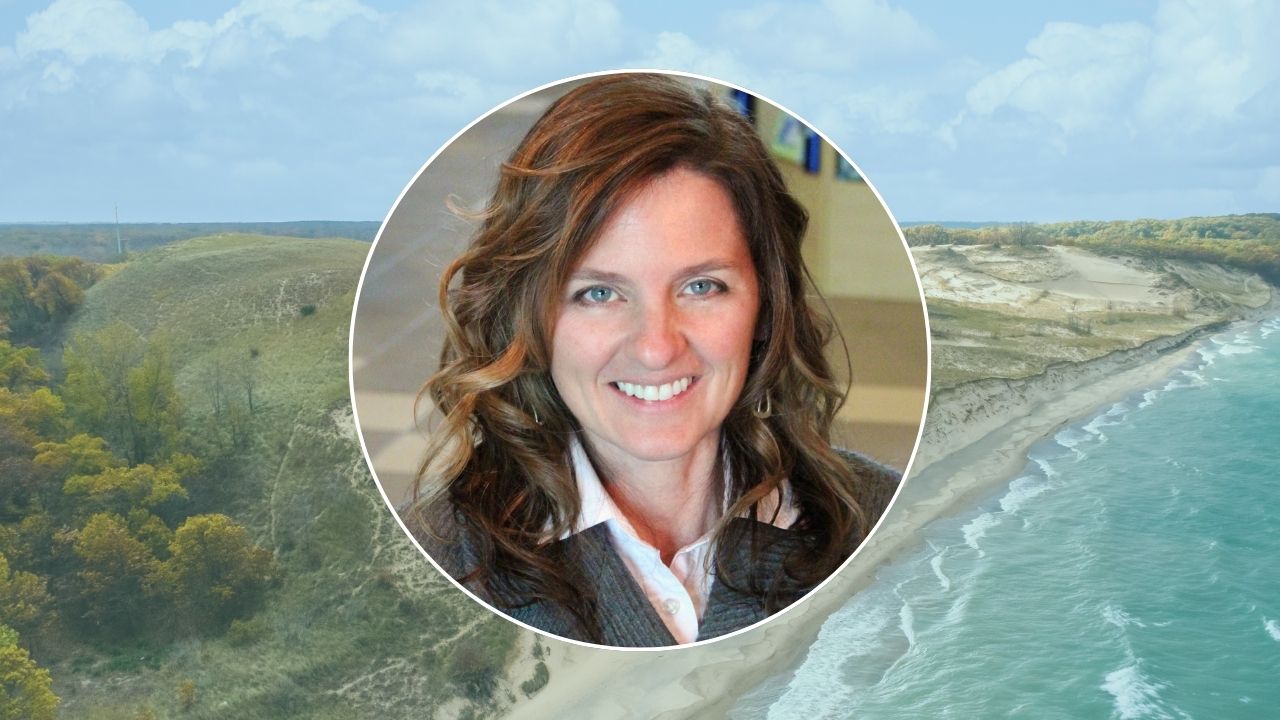
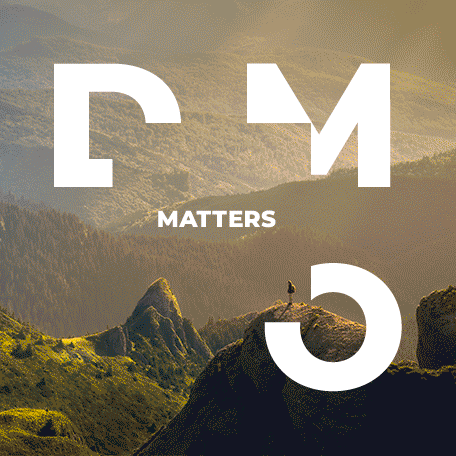
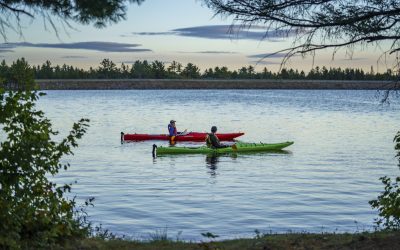
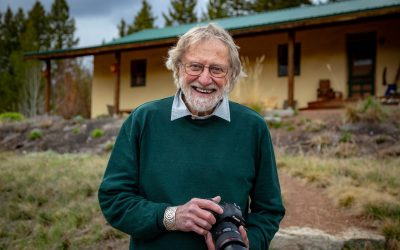
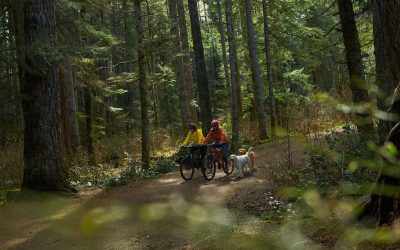
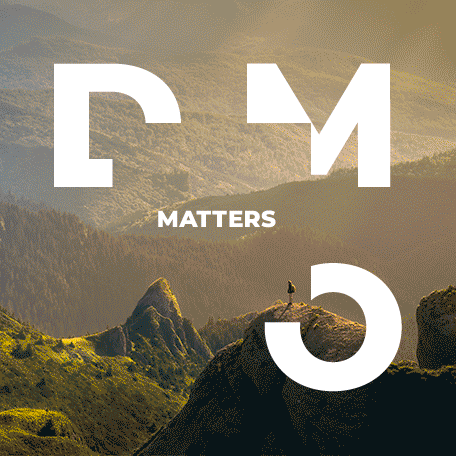


Fascinating article! As a resident of the Indiana Dunes area, I love having a cohesive story to tell when people visit.